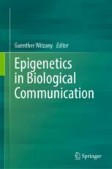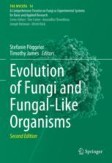Search
Search Results
-
Repeat-induced point mutation in Neurospora crassa causes the highest known mutation rate and mutational burden of any cellular life
BackgroundRepeat-induced point (RIP) mutation in Neurospora crassa degrades transposable elements by targeting repeats with C→T mutations. Whether...

-
Functions of the RIP kinase family members in the skin
The receptor interacting protein kinases (RIPK) are a family of serine/threonine kinases that are involved in the integration of various stress...

-
The massive 340 megabase genome of Anisogramma anomala, a biotrophic ascomycete that causes eastern filbert blight of hazelnut
BackgroundThe ascomycete fungus Anisogramma anomala causes Eastern Filbert Blight (EFB) on hazelnut ( Corylus spp.) trees. It is a minor disease on...

-
Calmodulin, Calcium/Calmodulin-Dependent Kinases-1 and 2 Regulate Expression of the Heat Shock Proteins for Heat Shock Tolerance and Pheromone Signaling Genes for Sexual Development in Neurospora crassa
Calmodulin (CaM) is a primary Ca 2+ sensor that binds and activates numerous target proteins and regulates several cellular processes in eukaryotes....

-
RIP mutated ITS genes in populations of Ophiocordyceps sinensis and their implications for molecular systematics
Different hypotheses have been proposed to interpret the observed unusual ITS (internal transcribed spacer) sequences in Ophiocordyceps sinensis . The...

-
Analysis of five near-complete genome assemblies of the tomato pathogen Cladosporium fulvum uncovers additional accessory chromosomes and structural variations induced by transposable elements effecting the loss of avirulence genes
BackgroundFungal plant pathogens have dynamic genomes that allow them to rapidly adapt to adverse conditions and overcome host resistance. One way by...

-
TSETA: A Third-Generation Sequencing-Based Computational Tool for Map** and Visualization of SNPs, Meiotic Recombination Products, and RIP Mutations
TSETA (Third-generation Sequencing to Enable Tetrad Analysis) is a fungus-centric software pipeline that utilizes chromosome-level sequence assembly...
-
Neurospora Genetic Backgrounds Differ in Meiotic Silencing by Unpaired DNA (MSUD) Strength: Implications for Dp-Mediated Suppression of Repeat-Induced Point Mutation (RIP)
Neurospora strains bearing chromosome segment duplications (Dp strains) can be generated in the laboratory and are also recoverable from natural...
-
Adherens junctions organize size-selective proteolytic hotspots critical for Notch signalling
Adherens junctions (AJs) create spatially, chemically and mechanically discrete microdomains at cellular interfaces. Here, using a mechanogenetic...

-
Repeat-induced point (RIP) mutation in the industrial workhorse fungus Trichoderma reesei
Trichoderma reesei (syn. Hypocrea jecorina ) is a filamentous ascomycete. Due to its capability of producing large amounts of lignocellulolytic...
-
DNA Methyltransferases and DNA Damage
Ever since the discovery of depletion of CG sites in mammalian genomes it has been clear that cytosine DNA methyltransferases (DNMTs) are linked to...
-
Evolution and Diversity of DNA Methylation in Eukaryotes
DNA methylation (DNAm) is an important and well characterized epigenetic process which regulates gene expression, plays a vital role in embryonic...
-
The PIWI-specific insertion module helps load longer piRNAs for translational activation essential for male fertility
PIWI-clade proteins harness piRNAs of 24–33 nt in length. Of great puzzles are how PIWI-clade proteins incorporate piRNAs of different sizes and...
-
Genome Evolution in Fungal Plant Pathogens: From Populations to Kingdom-Wide Dynamics
Plant pathogenic fungi have emerged as major concerns for plant health in agriculture and occupy important niches in natural ecosystems. Pathogen...
-
AGO2 silences mobile transposons in the nucleus of quiescent cells
Argonaute 2 (AGO2) is a cytoplasmic component of the miRNA pathway, with essential roles in development and disease. Yet little is known about its...

-
The RNA m6A reader IGF2BP3 regulates NFAT1/IRF1 axis-mediated anti-tumor activity in gastric cancer
N 6 -methyladenosine (m 6 A) and its associated reader protein insulin like growth factor 2 mRNA binding protein 3 (IGF2BP3) are involved in tumor...

-
Crucifer’s Pathogens Genome
The information on genome sequences, analysis and assembly of limited pathogens of crucifers has been generated and made available. It has given...
-
Dominant mutants of the calcineurin catalytic subunit (CNA-1) showed developmental defects, increased sensitivity to stress conditions, and CNA-1 interacts with CaM and CRZ-1 in Neurospora crassa
We studied a dominant mutant of the Neurospora crassa calcineurin catalytic ( cna - 1 ) subunit generated using the repeat-induced point mutation (RIP)....

-
Comparative genomics and gene finding in fungi
In the spring of 2005, we had access to 18 fully sequenced fungal genomes, and more are coming rapidly. New approaches and methods are being...
-
CLIC3 interacts with NAT10 to inhibit N4-acetylcytidine modification of p21 mRNA and promote bladder cancer progression
Chromatin accessibility plays important roles in revealing the regulatory networks of gene expression, while its application in bladder cancer is yet...

